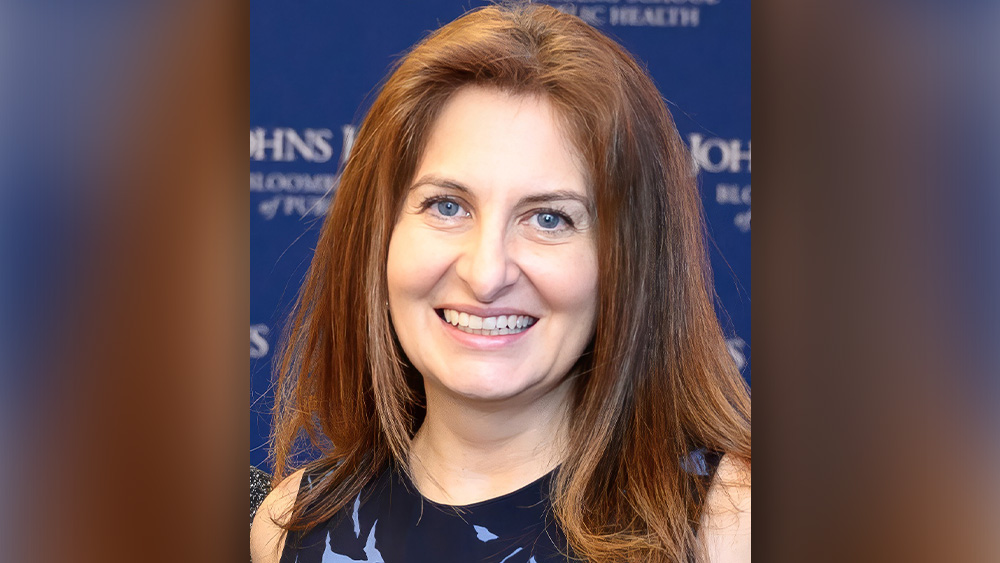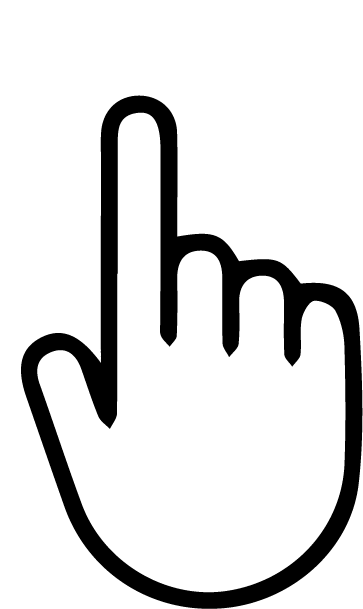Article Highlights
-
Adolescents in under-resourced neighborhoods have increased mental health risks.
-
A study of a mental health intervention for eighth graders coincided with the pandemic.
-
Researchers are working with participants to learn about mental health and COVID-19.
Middle school or junior high can be a challenging time. For many students, it’s a time of in-betweens — on the verge of high school, not quite a kid anymore, but with new responsibilities and worries that come with being a teenager. Those living in under-resourced communities may be exposed to additional stressors, including neighborhood violence, environmental pollution, and other barriers that make it hard to stay mentally and physically healthy.
The COVID-19 pandemic has brought additional challenges. Concerns about infections and illness, school closures, and lost jobs hit lower-income families of color even more acutely and put adolescents at greater risk of mental health crises.
With the help of a grant from NIH’s Office of the Director and support from the Eunice Kennedy Shriver National Institute of Child Health and Human Development, researchers explored how COVID-19 affected the mental health of high school students who had previously participated in a randomized controlled study when they were in eighth grade. Conducted in Baltimore City public schools serving under-resourced communities, the study examined whether a trauma-informed program called RAP Club improved student mental health when compared with a health education control group.
Student participants had a lot to navigate, said Tamar Mendelson, Ph.D., M.A., a clinical psychologist and researcher at the Johns Hopkins Bloomberg School of Public Health. Most of the kids Mendelson works with in Baltimore grew up in communities shaped by structural racism, she said, “and they experienced ongoing stressors and traumas as a result, even before the pandemic.”
Mendelson and her colleague Laura Clary, Ph.D., M.S., recontacted study participants and conducted follow-up surveys with those who responded. The team found that the in-school program gave students some measure of resilience during the pandemic, compared with students who had been randomly assigned to the health education control group. Students in the RAP Club program, who learned techniques such as mindfully observing their emotional state and using coping skills to handle emotions effectively, did not report increased pandemic anxiety, whereas those in the control group did. A similar pattern was observed for depressive symptoms.
“The pandemic is an important reminder that we need to address mental health for all young people,” Mendelson said. “And it’s especially critical that we find ways to support youth whose opportunities for health and wellness have been systematically restricted.”
“The pandemic is an important reminder that we need to address mental health for all young people.” — Tamar Mendelson, Ph.D., M.A.
Prevention Power
When it comes to supporting young people’s mental health, Mendelson said, “The idea of prevention has always been really appealing to me.” In particular, she is interested in reaching young people in large numbers and in a way that destigmatizes mental health needs. While some young people will still need specialized mental health treatment, she said, prevention has the potential to reduce suffering and health care costs. “The more we can prevent problems, the better,” she said.
But in underserved communities, access to mental health services is often limited, while the need is great. Teenagers in disadvantaged neighborhoods of Baltimore might live with higher crime rates, family challenges, racial discrimination, and reduced access to resources like health care. “They may be coping with a lot of things that young people shouldn’t have to cope with.” said Mendelson.
Mendelson’s work with the RAP Club program started more than a decade before the pandemic. Before 2010, Mendelson and her colleagues partnered with young people in Baltimore to adapt a trauma treatment program into a mental health and wellness program called RAP (Relax, be Aware, and do a Personal rating) Club. RAP Club was initially offered to older adolescents and young adults seeking job training and preparing for high school equivalency exams. When the program proved to be successful, she started to wonder whether a similar effort might help younger students develop coping skills. “I really loved the idea of trying to reach young people before they had the need of treatment services,” she said.
Starting in 2015, Mendelson and her team recruited 49 seventh and eighth graders for a pilot study at two schools serving disadvantaged communities; 94% of the students identified as African American. These students participated in 45-minute RAP Club sessions twice a week for six weeks. Typically, the sessions began with a brief mindfulness practice in which the students checked in with how they felt that day and rated their stress level on a stress thermometer. At the end of the session, they would notice whether anything had changed about how they felt. “Many of the young people were not used to checking in with themselves and identifying what they felt,” she said.
Mendelson said that this approach helped students notice gradations in their moods and practice paying attention without reacting or trying to change anything — a foundation of mindfulness. In the program, students also worked on skills like communication and problem-solving and learned how stress and trauma can affect their day-to-day mental health.
Teachers in this pilot study reported that, compared with students assigned to a control group, the students who participated in the program were more able to regulate their own emotions, did better in both academic and social situations, and had better behavior in the classroom.

Tamar Mendelson, Ph.D., M.A., clinical psychologist and researcher at the Johns Hopkins Bloomberg School of Public Health. Photo courtesy of Tamar Mendelson.

Tamar Mendelson, Ph.D., M.A., clinical psychologist and researcher at the Johns Hopkins Bloomberg School of Public Health. Photo courtesy of Tamar Mendelson.
Scaling Up
To see whether the program could make an impact on a wider scale, the researchers set up a clinical trial called Project POWER (Promoting Options for Wellness and Emotion Regulation), this time narrowing their focus to eighth graders who would soon make the transition to high school. Participating eighth graders at each school were randomly assigned to the RAP Club program or to an active control group — a program called Healthy Topics that covered health-related topics including nutrition, substance abuse, and health literacy. Between 2016 and 2020, the researchers collected data on four student cohorts across 29 Baltimore City public schools, enrolling 615 students.
Participating students filled out surveys before the programs started, immediately after they finished, four months later, and a year later. Analyses showed that the program helped — and is continuing to help. “What we were seeing is that the effects of the program increased over time so that mental health benefits were strongest after students had transitioned into high school,” Mendelson said. Immediately after the program, both boys and students who had experienced more trauma before starting saw more improvement; four months later, students reported easing PTSD symptoms.
A year after students completed RAP Club, Mendelson said, every mental health symptom had improved, including anxiety, signs of trauma and depression, and behavior problems. “That was really encouraging to us.” She said that she wonders whether the delay in improvement could be linked to students’ experiencing — and noticing — new stresses as they started high school.
Both students and teachers had positive things to say about the program. One school counselor noted a difference between the kids who had attended RAP Club and those who had not. “I feel like when I’m comparing the students that participated in RAP with the students who did not, I feel like they are able to better adapt” to the hectic nature of both middle school and adolescent life, the counselor said in a 2016 interview with the researchers.
Students noticed the difference, too. “I think about my actions first before I do it,” one student said. “How to handle situations differently, like not to make one choice too soon before you might regret it.”

COVID-19 & Mental Health
NIH has a resource library dedicated to the critical connections between COVID-19 and mental health.
How Students Coped With COVID-19
What the researchers and the students did not know was how useful these skills would be in 2020. The final group of students in the Project POWER trial participated in RAP Club or the control group in fall 2019. The trial’s four-month follow-up surveys normally took place in person. When schools closed in March 2020 because of the COVID-19 pandemic, the researchers switched to online surveys to find out how the students were doing four months after the course and then a year later.
The 2021 grant from NIH’s Office of the Director allowed researchers to dive even more deeply into understanding how these students were faring during the pandemic and whether students who had been part of RAP Club were helped by what they learned, even years later. Mendelson and her colleagues attempted to recontact all Project POWER participants, both those who had been assigned to RAP Club and those assigned to Healthy Topics, and were able to reenroll 151 young people from the original study sample. The researchers conducted online surveys and interviews with this subset of participants, some of whom had participated as far back as 2017. The team asked participants detailed questions about the experiences and stress that the COVID-19 pandemic brought with it.
Students from both groups experienced significant life changes during the pandemic. More than 10% of the students had someone close to them die from COVID-19, and more than 30% reported that their families went through job insecurity and financial problems during the pandemic.
When the researchers surveyed the control group, they found that students in the control program had increased anxiety during the pandemic, whereas those who had participated in RAP Club did not. This finding suggests that RAP Club has had a protective effect on student mental health during the pandemic. The researchers saw a similar, though not statistically significant, trend for symptoms of depression.
“COVID shone a spotlight on youth mental health problems, which had been on the rise for a decade prior to the pandemic but had not received very much public attention,” Mendelson said. Providing tools like those found in RAP Club could be a way to begin supporting young people during the pandemic and the beginning of the rest of their lives.
Next Steps
Mendelson and her team are working on moving the RAP Club program from research into practice. The next step in this process is to test whether school personnel can deliver RAP Club as effectively as members of the Project POWER team, making the RAP Club more sustainable and potentially scalable to more schools in Baltimore and elsewhere.
The team conducted a small pilot study to evaluate whether school personnel could teach RAP Club with training and supervision. Encouragingly, they found that school staff delivered the program with fidelity. The staff members, who did not have specialized mental health training, were highly enthusiastic about RAP Club and reported that it was incredibly helpful for students. Next, Mendelson hopes to test the effects of RAP Club delivery by school staff across a large number of schools and also to study the most effective ways of delivering the program. For example, are school personnel without mental health backgrounds as effective at delivering RAP Club as school mental health providers? Is virtual group supervision as effective as also providing in-person coaching and feedback?
However far the RAP Club’s reach extends, helping students learn how to support themselves pays off. “My personal soapbox is that universal prevention approaches can be effective and have the potential for population-level benefits,” Mendelson said.
Students can feel the effects. As one eighth grader told the researchers, “When you learn your feelings, you kind of find, like, inner peace. That happens, yeah.”
Sources
-
Mendelson, T., Tandon, S. D., O’Brennan, L., Leaf, P. J., and Ialongo, N. S. (2015). Brief report: Moving prevention into schools: The impact of a trauma-informed school-based intervention. Journal of Adolescence, 43, 142–147. https://doi.org/10.1016/j.adolescence.2015.05.017
-
Mendelson, T., Clary, L. K., Sibinga, E., Tandon, D., Musci, R., Mmari, K., Salkever, D., Stuart, E. A., & Ialongo, N. (2020). A randomized controlled trial of a trauma-informed school prevention program for urban youth: Rationale, design, and methods. Contemporary Clinical Trials, 90, 105895. https://doi.org/10.1016/j.cct.2019.105895
-
Tandon, D., Mendelson, T., & Mance, G. Acceptability and preliminary outcomes of a peer-led depression prevention intervention for African American adolescents and young adults in employment training programs. Journal of Community Psychology, 39(5), 621-628. https://doi.org/10.1002/jcop.20444
 An official website of the United States government
An official website of the United States government


